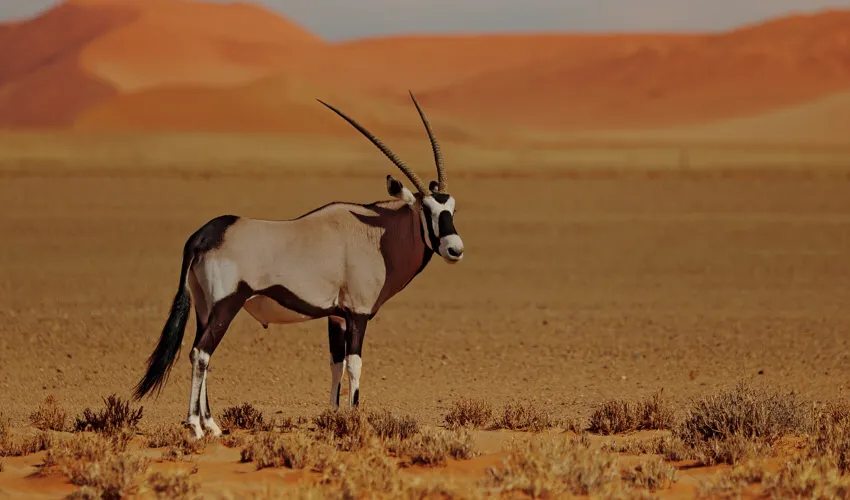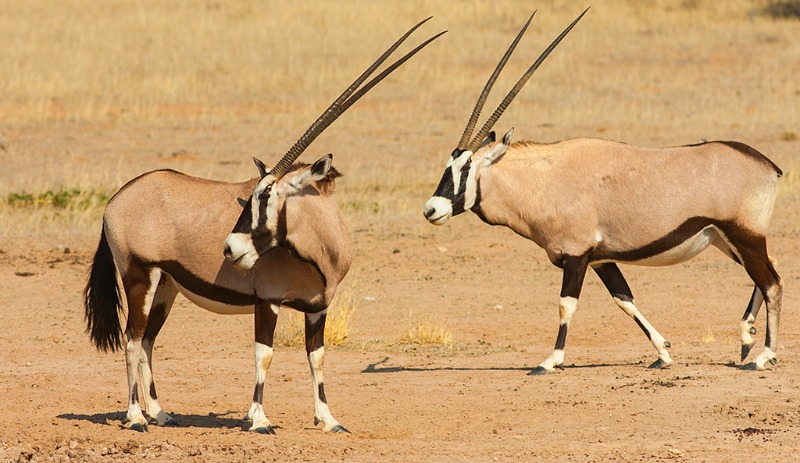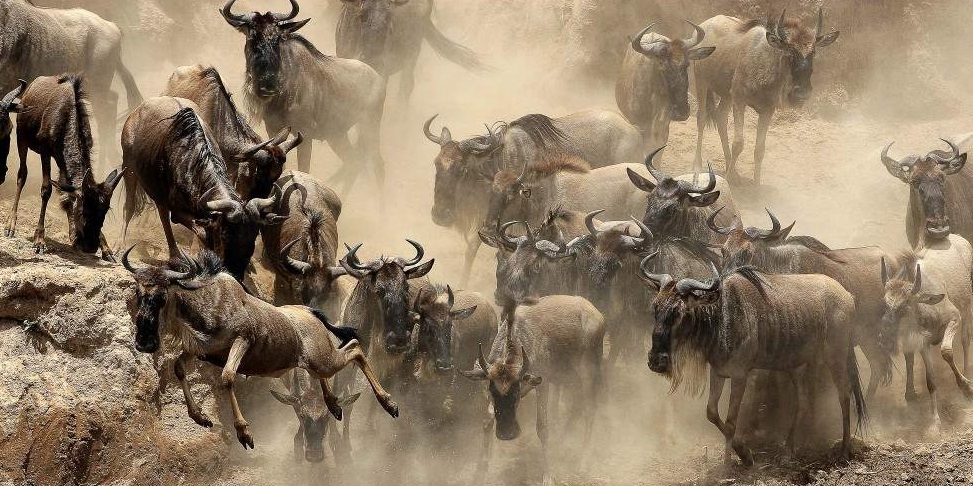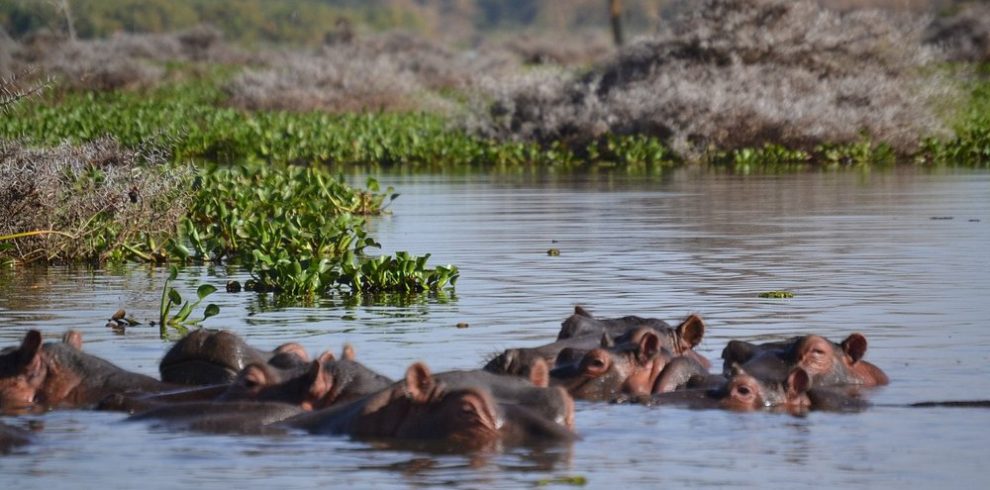The Gemsbok (Oryx gazella), which is also known as gemsbuck, a kind of antelope that can be found in the deserts of southern Africa. It has a majestic look and has some of the most unique adaptive characteristics, which makes the Gemsbok one of the most interesting animals in the African veld. With its long straight horns and slim and muscular form it is indeed one of the most beautiful animals found in the wild of Africa. But besides the appearance, the Gemsbok represents endurance, versatility and capability to survive in some of the world’s most stern habitats. Below are five fascinating facts about the Gemsbok you should know about the Gemsbok:
Learn interesting facts about gemsbok, the majestic desert antelope known for its striking horns, desert survival skills, and unique adaptations to harsh environments.
These pieces of information will not only make it easier for you to appreciate this beautiful beast, but you’ll also get to understand how the animal has been able to survive in the harsh environments of the African drylands. For anyone interested in Africa’s fauna, planning a safari, or just wondering about this species, these little fascinating facts about the Gemsbok may offer a fresh revelation.
1. The Gemsbok’s Remarkable Adaptation to Desert Life

A unique feature worth mentioning about the Gemsbok is its adaptability to live in the harsh conditions of southern Africa territories such as the Namib desert and the Kalahari. These are large areas of the world, mainly deserts that have salient features such as high temperatures, low rainfall and sparse vegetation cover. However, the Gemsbok has developed several remarkable physiological and behavioral adaptations that can enable it to survive in these circumstances.
Among all of the adaptations, the Gemsbok’s capability of surviving without much water is the most noteworthy one. Unlike many other animals that require taking water at frequent intervals, Gemsboks can survive for several days without taking water. They get most of their water from the vegetation they feed on including dry vegetation like grasses, cactuses, and bushes that contain moisture in their stems. Still in the rare period that water is scarce Gemsboks are known to take large volume of water to hydrate themselves. This has made them capable of living in areas where water is hard to find especially in desert regions of the world.
Also, another interesting facts about the Gemsbok, it is its ability to control its body temperature. These antelopes are thermotolerant, capable of maintaining, and sometimes elevating body temperature to above 40°C and falling during nights. It allows these animals to endure high temperatures, which means that they are not very often in search of a comfortable and shady place; it also means they require less water in general.
Secondly, Gemsboks have a very small mass with highly developed kidneys to help reduce water loss. They are able to create concentrated urine which minimizes its volume and allows them to retain fluids when in extreme weather conditions. These physiological and behavioral features make the Gemsbok stand out as the true inhabitant of the desert biome.
2. The Iconic Long, Straight Horns of the Gemsbok

It has a lanky and attractive body, and its most outstanding feature is the horns which have ecological functions too. Long, thin, straight tubes are observed in both sexes, however, bigger horns are reported in male individuals. These consist of tusks that can reach up to one meter in length and are employed as weapons and in communications.
Gemsbok has a unique feature and this is sharp curved horns that were used in defending the animal from other antelope predators. Despite the fact that the Gemsbok is a large and speedy member of the antelope family, it is still a target of lion prides, hyenas and wild dogs. The Gemsbok, to protect itself, has got horns that it can used even dry on someone, you know. The African buffalo has both male and female horns that are sharp, and these are proven to be mighty weapons whose blows can cause terrible injuries out in the wild. In the face of aggression, a Gemsbok will crouch onto the ground and direct its horns at the perceived danger. In the event that a predator get close to a Gemsbok, it launches into action by charging and using his horns to strike the predator violently.
Another form of dominance displays or is shown through the Gemsbok horns, which is mainly demonstrated by dominant male Gemsboks. Male is territorial and fights during the breeding season to ward off rivals in order to gain access to females. These fights are commonly referred to as horn clashes, in which two males engage each other in a battle using their horns to push, shove and more. The result of these fights define which of the males will have access to a female and these can go on for hours till one of the contestants succumbs.
Besides their utilization for protection against other Gemsbok as well as for channeling during the act of mating, they have cultural significance as a demonstration of power and stability. Their aesthetic value and graceful curve is probably one of the reasons why Gemsbok’s are held in such high regard.
3. Gemsboks Are Highly Social Animals with Strong Herd Dynamics

Even though their living environment is extremely harsh, being the Kalahari and Namib deserts, these are sociable animals that form herds that can consist of a few members to twenty to thirty some at times. Males are generally solitary or live in smaller groups referred to as harem herds, which are mostly composed of females and young ones. Social structure remains a significant factor in Gemsboks because it enables them to protect each other when in large groups and Helps them locate food and water sources.
Another fascinating facts about the Gemsbok is that of group living – the herding system of the Gemsboks. Everybody needs friends and family and members of a particular group will do all in their power to protect group members and also ensure that they are all well fed. For instance, the young ones are defended by the females, and the group is on the lookout for predators on behalf of the young Gemsboks. For instance, when there is a presence of threats in its natural habitat, the entire group or herd will surround those that cannot defend themselves, especially the young, and the adult animals will face the threats as they defend the same young from danger.
In this way, members of the same herd can use vocal messages, gestures, and even scent to share information. The gemsboks also employs different vocal sounds, the grunts or snorts and the high pitched calls depending on mood or when responding to stimuli. These vocalizations also restore unity within the herd and let other members of the group know that there is a potential danger. Also, scent marking is significant for Gemsboks since they may leave a scent trail for you other members of the herd to follow or to identify the scent of a stranger.
Despite the fact that Gemsboks are mainly browsers, they practice a behavior commonly referred to as food sharing. This is manifested when one Gemsbok stumbles upon a new resource like fresh grass or a particular type of plant, the rest of the herd will go there to feed on the same resource. This cooperation makes sure that the whole group gets all the resources they need, and this brings about harmony within the group of cows.
4. Gemsboks Have Impressive Speed and Agility

Gemsbok is a very lively and swift animal that is able to run rather fast when needed. One interesting part of the anatomy of Gemsbok is their capability to escape from the predators thanks to the speed that enables the animal to cover long distances in order to look for the food or water sources. Gemsbok is a fast runner and can reach a maximum speed of 60 km/h, and it lasts for a long period without getting tired easily.
This tremendous speed and energy is incredibly important given specific living conditions typical for the desert where food and water are not always available. When threatened by a predator, a Gemsbok is capable of suddenly changing directions and speed up to evade the predator in the shortest time possible. Thanks to its flexibility and orientation in the environment it can outcompete its predators and get away from them.
As it is important to note, Gemsboks are not only fast runners but also great jumpers. This versatility of movement is a plus in the deserts they inhabit as they can jump over shrubs and rocks and other types of barriers. The Gemsbok has the agility of a gazelle and can jump and run at high speed, making it extremely hard for predators to capture it.
Notably, the Gemsbok’s mobility features also contribute to its feeding habits as a species. Another factor is the Gemsboks are active foragers and they are able to move from one area to another in search of fresh pastures in large tracks within a short span of time. It enables them to stretch their ability to locate food and water sources regardless of the scarcity of such resources.
5. The Gemsbok Plays an Important Role in Its Ecosystem

Despite its appearance and the image of a strong and independent predator, the Gemsbok is one of the valuable and necessary species of the African savannah. The Gemsbok being a herbivore has its unique role of limiting the growth of grass and other vegetation to enable growth of other plant species. A Gemsbok feeds on grasses, shrubs, and other succulents thus contributing to the growth of plants that other animals can feed on as well.
Also, the Gemsbok is one of the primary large prey animals which is the target of some of the major African predators such as lions, cheetahs, and Hyenas. Despite being one of the most elusive prey species, the Gemsbok contribute to food chain, meaning it contributes to the diet of predators. Even though it is fast and maneuverable and its defensive instinct that can successfully fend of predators its rightful place is in creating balance in the ecosystem of African savanna.
It also eats plants and seeds hence serves as a seed dispersal unit for different species in the region. This is especially so because plant life in desert environments is scarce. With the feeding habits of Gemsbok, they are able to play a crucial role in the sustenance and dissemination of vegetation in their ecosystem.
Conclusion
The Gemsbok, scientifically known as Oryx gazella, is an incredibly versatile species that characterizes strength and endurance in some of the most severe climates of our planet. In many ways, both physically and socially, the Gemsbok is a remarkable antelope that deserves admiration and respect. Learning these facts about Gemsbok helps to enrich our knowledge about this special antelope and also expands our knowledge of the link of the world in southern Africa.
Perhaps it is due to the Gemsbok’s adaptation to survive without water in very hot temperatures, it’s representation in the African desert or maybe due to its speed, gracefulness and strength that makes this animal to be among the most admired by wildlife lovers and tourists. The Gemsbok is a worthy king of the desert of Africa because this animal has so many interesting features and behavior patterns.






